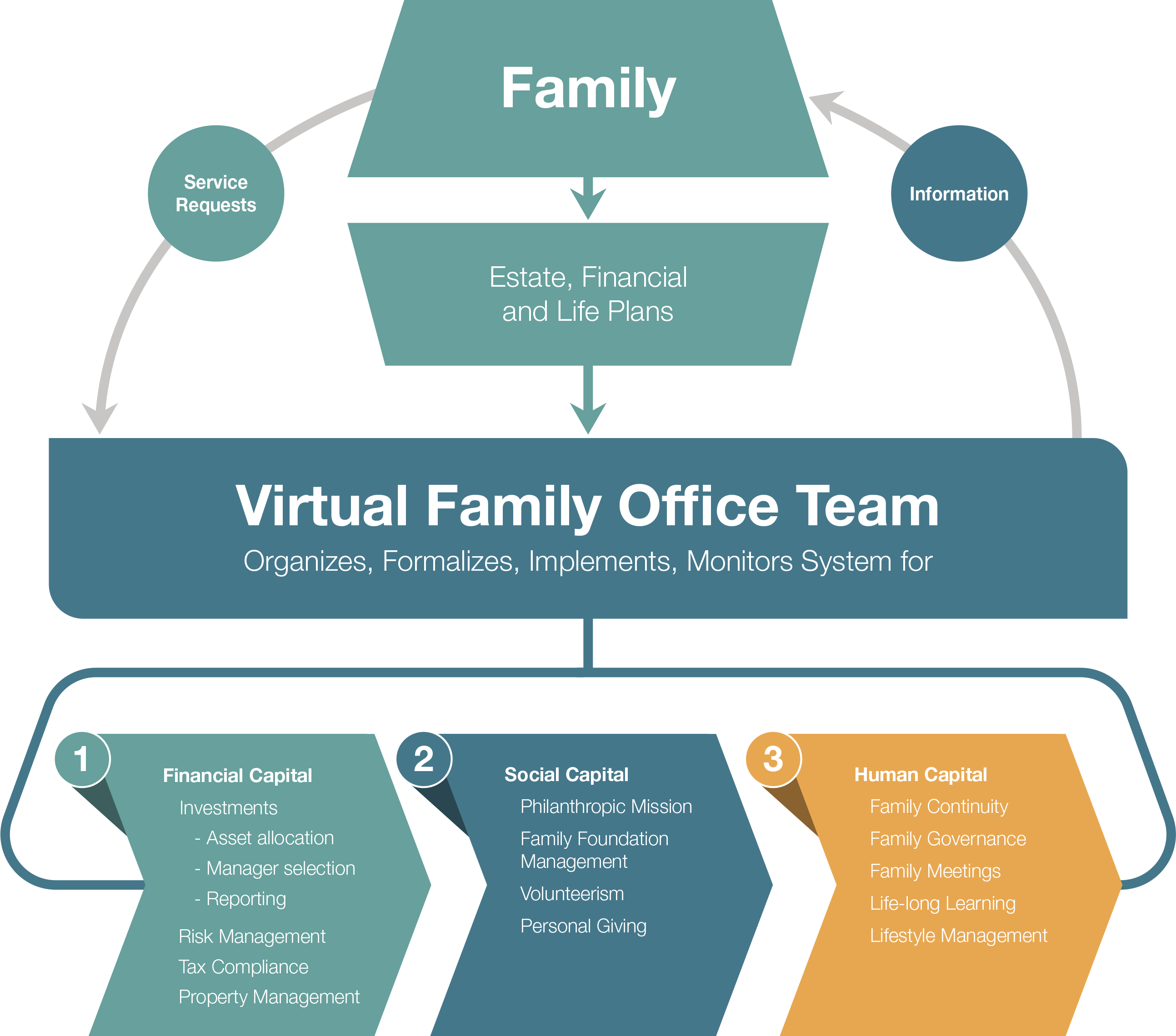Virtual Family Office
Evolution of the Virtual Family Office model
Today, the Virtual Family Office (VFO) model, developed in the 1990s by Michael T. Hartley, his colleagues, and others, enables individual professionals and boutique professional firms to combine their expertise to serve the ultra-wealthy family in an efficient and highly effective manner.
In the VFO model, teams of professionals are assembled to specifically meet the needs of a family such as yours. Your family's most trusted advisor serves as the relationship manager and helps assemble a highly talented and experienced team. The team members train together to ensure they fully understand your family's needs and goals and the responsibilities of each team member. In the VFO mode of operation families pay only for the services they need.
Virtual Family Office Team:
How to become a Transformational Family
Think of your Virtual Family Board of Directors as a buffer between, and interface with, the complexity of your financial plan. We organize all of the elements of your plan into systems that manage all three forms of family wealth. You're provided the information you need, while we respond to your requests and provide strategic focus designed to avoid or mitigate risks.

Transformational Families
Most people believe wealth is comprised only of their financial capital and they unintentionally ignore other forms of family capital in their Personal Wealth System which harbor the greatest potential for lasting impact. Highly successful families organize their financial capital so they are able to devote their resources to cultivating, enhancing and sustaining their social and human Capital. Only when these forms of capital are nurtured can a family build a lasting legacy for generations.
Families who commit to being transformational families believe the most important investments are those in themselves, their descendants and their community. By rethinking the role of their financial capital, they begin to see these assets as a means to support and grow the other forms of their family capital—social and human capital—which have the greatest effect on family coherence and impact.

Building a Team for Your Future
Traditionally, families built a network of professionals to support them in one of two primary ways: a siloed approach where professionals work independently of each other and only as needs arise, or a full-time professional staff approach. Both designs present potential dangers to a family. A siloed approach may cause recommendations by one or more of these professionals to be made in a vacuum that ignores other areas of planning, or they may rely on the family to relay messages from one professional to another. In this situation, highly technical solutions may unknowingly be miscommunicated causing confusion and potential errors. A full-time staff approach can either be cost-ineffective as full-time staff may not be needed at all times, or staff members may lack experience in areas of need that require technical expertise.
By using a team structure that fosters communication among team members, and the flexibility to integrate technical professionals when needed, planning will become more coordinated, efficient, cost-effective, and can be scalable over multiple generations and future households.


